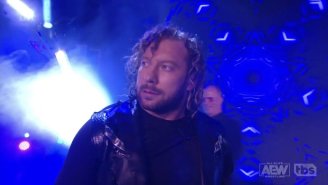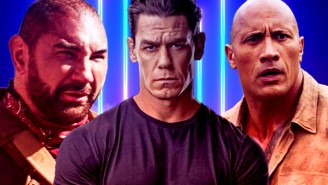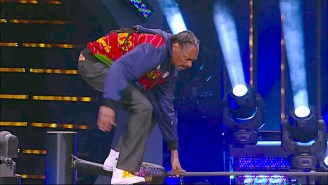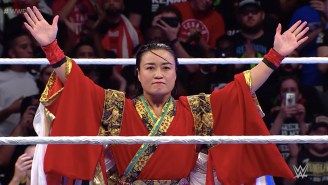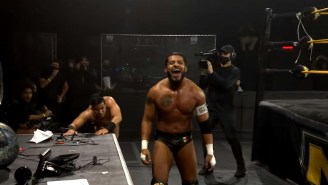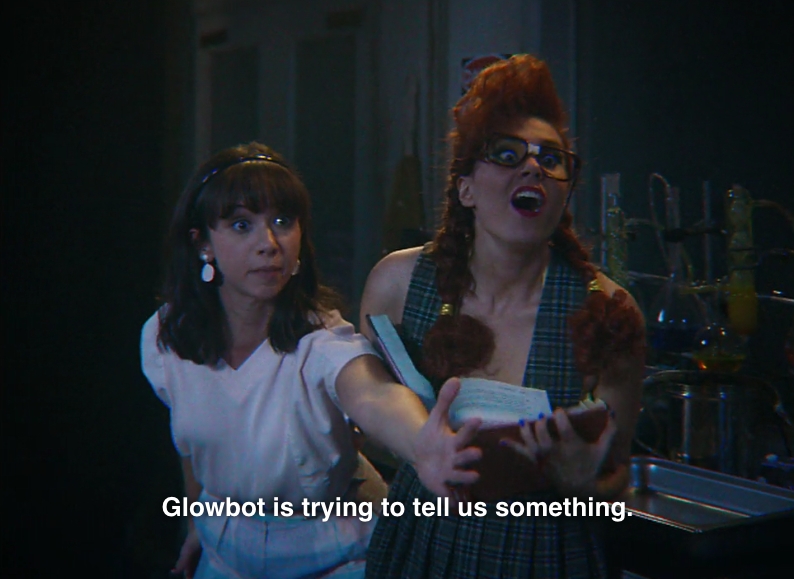
8 Great is our new, extremely original listicle series where we take a break from snark and negativity to focus on the positive and list eight of our favorite examples of something great from pro wrestling. Matches, performers, shows – whatever is helping us enjoy wrestling in a particular week, that’s what this feature is all about.
Season three of Netflix’s hit GLOW airs a week from today, August 9, and we wanted to celebrate the return of our favorite show on the service (to note feature a depressed horse) by discussing eight of our favorite moments from seasons one and two.
An important note here is that GLOW is at times a very dramatic and spoiler-unfriendly kind of show, so we made sure to pick eight moments that won’t spoil any of the major character or plot developments, in case you haven’t seen it yet. The idea is to get you to want to see it, and if you’re already to the point of reading about pro wrestling on the Internet, chances are, you’ll like it. Read with confidence, as we’ll only spoil a bunch of minor things.
Keep in mind, though, that most of the scenes and moments that earn actors awards — like the 2019 Emmy Betty Gilpin 100% deserves and will hopefully win — are the most important in the series, so don’t take our biased focus on the “in-ring” stuff to think there’s not more going on. It’s a great show, hopefully you don’t still need the hard sell after two seasons.
Anyway, here are 8 Great moments from seasons 1 and 2 of GLOW.
Playing With Stereotypes
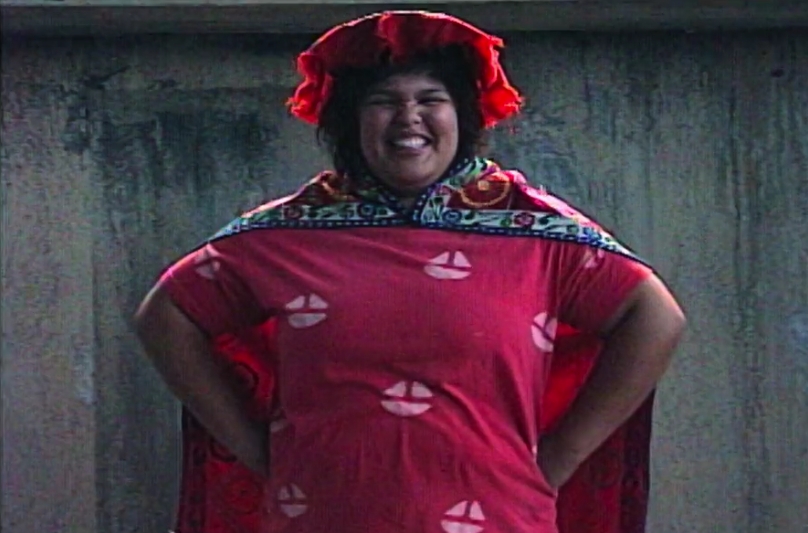
While the first two episodes of the show are amazing tone-setters, one of the first truly great moments of GLOW happens in episode three. Marc Maron’s Sam Sylvia wants the show to have a dense narrative about cyborg lesbian mutants in a post-apocalyptic future, but the idea for the Gorgeous Ladies of Wrestling doesn’t really connect until the cast discovers the costume closet at the home of the show’s “money mark,” Sebastian ‘Bash’ Howard.
Through his suspiciously thorough selection of costumes, the girls begin playing with absurd 1980s pro wrestling steroetypes like “Beirut the Mad Bomber,” “Fortune Cookie” (catchphrase: “I am Fortune Cookie … an Asian!”), and the Burger King crown-wearing “Welfare Queen.” The character tryouts are hilarious and as off-putting as you’d expect, and it’s kind of like watching a car crash in slow motions. There were drugs in the robot, guys, the ’80s were a different time.
Ruth Wrestles Herself
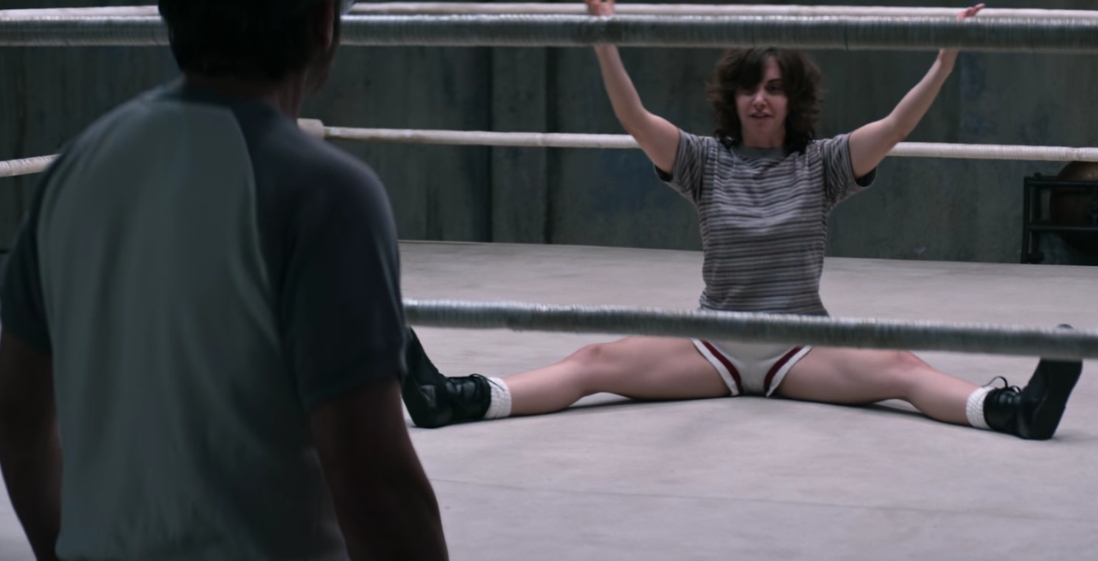
While we mentioned how much Betty Gilpin deserves an Emmy in the intro, we’ve got to give it up to series lead Alison Brie for going full Fight Club to explain why she’d make the perfect (and very Russian) heel for Gilpin’s Liberty Belle. She wrestles a convincing match all by herself, hitting moves like the “soon to be famous Rough Toilet Paper,” the “Breadline” — she’s still working on the names — and her finisher, a Zangief-style piledriver called, “Vodka For Breakfast.”
Debbie thinks they can, “do better,” but Brie’s Ruth is basically the Ric Flair of the group at this point. Put her in the ring with a broomstick.
Backyard Wrestling
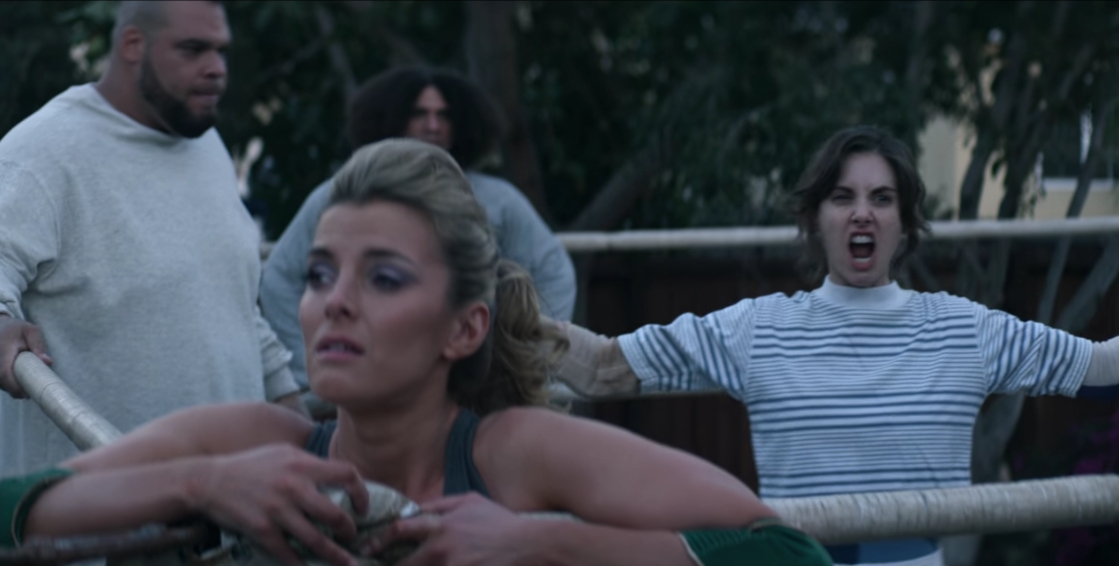
There’s a lot of real pro wrestling content on the show, from the recreation of Mando Guerrero’s training gym to cameos from folks like John Morrison and Christopher Daniels, but the best might be when Debbie and Ruth seek outside help from Carmen’s famous wrestling family, the “Lumberjacksons,” played by former WWE stars Carlito (Caribbean Cool) and the Funkasaurus. Actual wrestling is way weirder than prestige television wrestling, by the way.
They literally wrestle in a backyard, with their inspirational ’80s montage set to one of the greatest songs of the era, Stan Bush’s ‘Dare’. If you can’t get emotionally invested in watching people learn to throw clotheslines to the Transformers: The Movie soundtrack, are you even alive?
Clash Of Klans
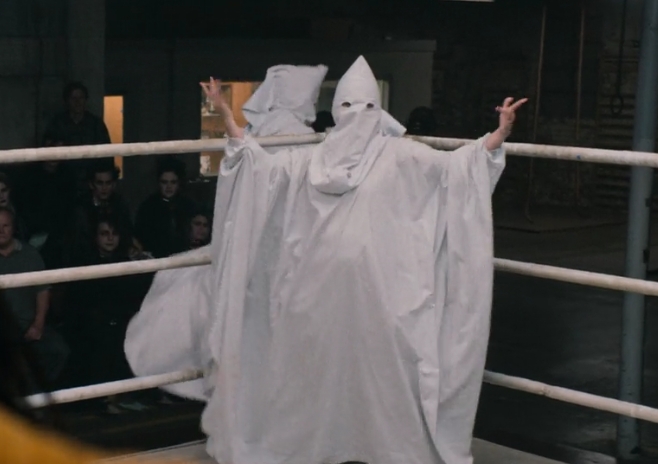
As I mentioned in the intro, GLOW also tackles a lot of serious issues, from infidelity and divorce to sexual identity and abortion. One of the issues it couldn’t possibly shy away from (unless you missed that part about Fortune Cookie and a mad Middle Eastern bomber above) is race.
One of the earliest and best examples of this is during the girls’ first live show, when the two African-American women in the cast — Cherry and Tamee — decide to call an audible and achieve maximum heat (and glory) by turning their opponents into straight-up Klansmen. Inspired by former WWE Superstar Virgil and events you wouldn’t believe really happened unless someone told you about it and you watched the video, it puts classic pro wrestling’s obsession with race and power into question like few other shows, especially wrestling shows, has.
Plus, it gave us the greatest play-by-play call in fictional wrestling history:
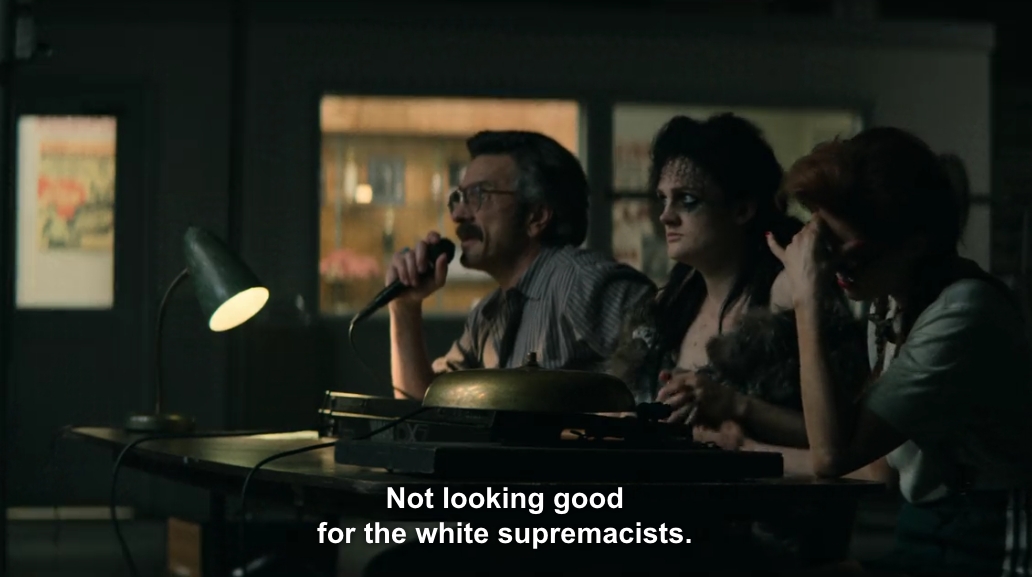
For The Crown
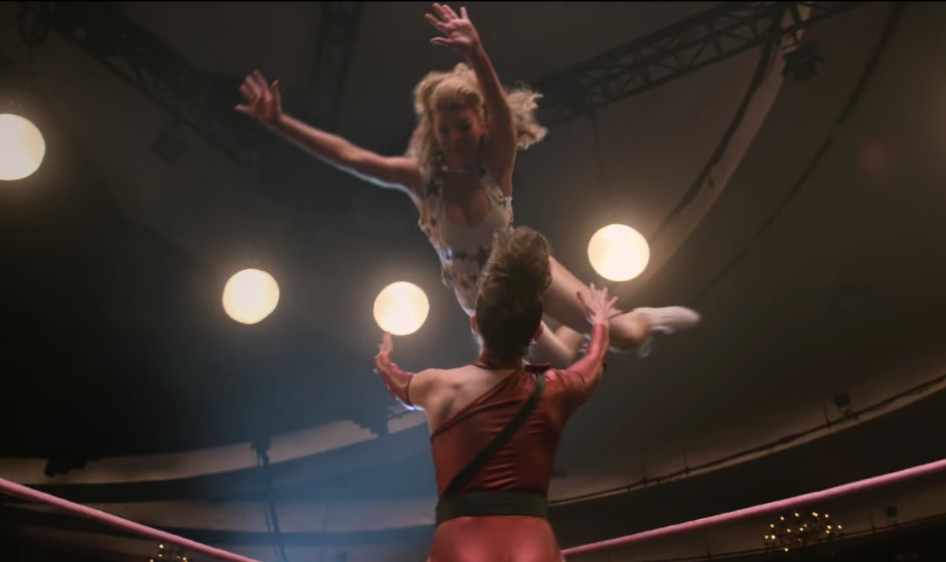
The season one finale is great for a number of reasons, but the big in-ring battle between Zoya the Destroyer and Liberty Belle is number one. Not only does it flow naturally from the season-long arc between Debbie and Ruth, it ties back to the backyard wrestling moment (see above), and tops Stan Bush with Pat Benatar’s ‘Invincible.’
One of the coolest things about GLOW is that it manages to work as an actual wrestling show in addition to being about the creation of one. Based on a real one from 30 years ago, that was also kind of about creating a wrestling show, but campy. It’s a real labyrinth of creativity when you think about it.
Grandest Stage Of The Mall
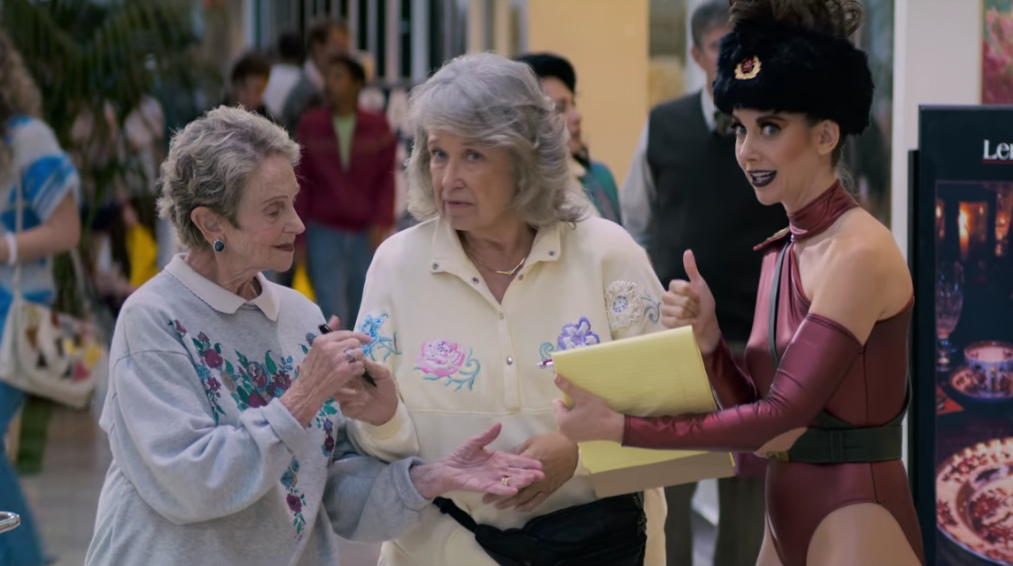
One of my favorite things about the original GLOW (which you can read more about here, if you aren’t familiar) is how guerrilla a lot of the episodes felt. It didn’t seem like a show that bothered getting a lot of permits, and was always randomly shooting music videos inside/throughout a casino or doing bad choreography out by the hotel swimming pool.
That spirit’s captured wonderfully in season 2, when Ruth decides to take everyone to the mall and film an intro for their television show. It involves way too much nonsense on the escalators to be safe, secret attacks at the hair salon, and hair dryers being used to create DIY wind effects. Also, a random police officer. If the Netflix version of the show’s missing anything from the original, it’s the ridiculous Hee-Haw stuff between matches.
Get A Job
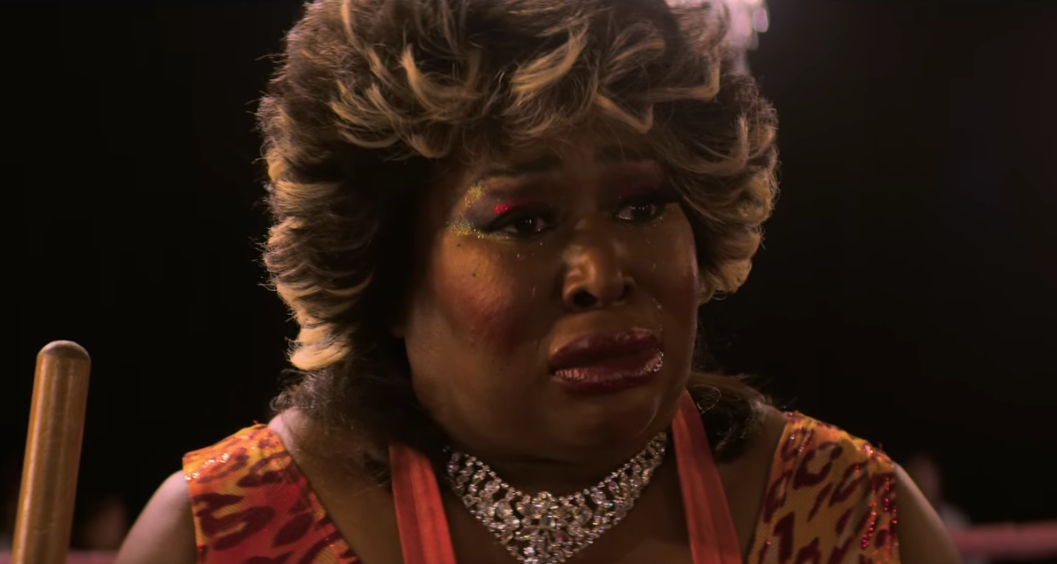
I’ve had to skip a lot of the heartbreaking stuff because of major spoilers, but I advise everyone reading this, especially the ones who haven’t seen GLOW and might be familiar with pro wrestling’s Awesome Kong, to watch the season 2 episode, ‘Mother Of All Matches.’
In it, Tamee visits her son at Stanford and hopes to help him gently understand the very weird thing she’s chosen to do for a living. It just so happens that the show she invites him to features her character, the Welfare Queen, getting beaten and berated by All-American white girl Liberty Belle about being a worthless person who needs to stop mooching off the system and get a job. The scene where the incredible Kia Stevens stands there with a broom and an apron and bursts into tears looking out at her son is a punch through the heart. The only thing more affecting is her son’s response to it afterward. This episode should be appointment viewing, and Kong really should’ve gotten an Emmy nod, too.
The Episode Within An Episode
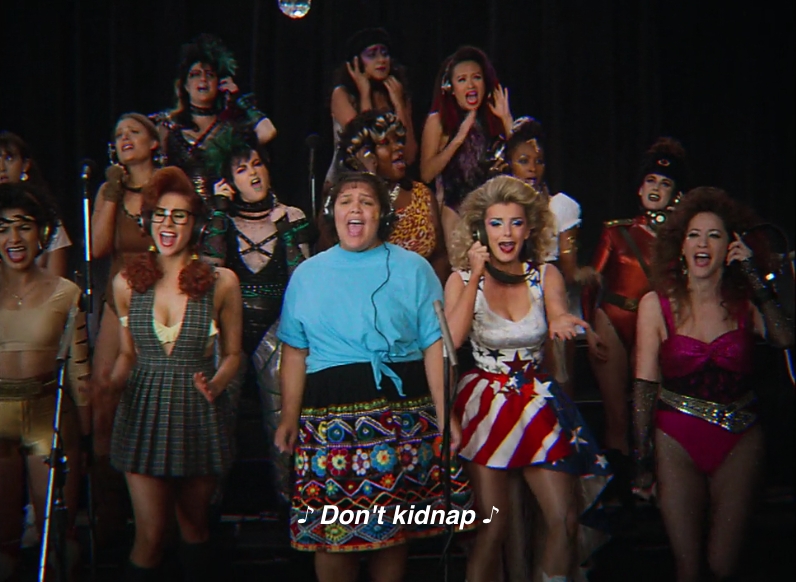
What can be said about the spectacular season 2 episode, ‘The Good Twin,’ that I haven’t already said at length?
It’s an episode of the Netflix show dedicated to showing an episode of the show within a show in full, complete with comedy sketches between the matches and full-on advertisements. It’s a masterpiece of television in a few obvious and a few more confusing ways, and I’ll let the showstopper ‘Don’t Kidnap’ do the talking.
Reissued by popular demand, we are excited (and touched) to present, 'Don't Kidnap' by the Gorgeous Ladies of Wrestling. Call 1-800-555-0199 now! pic.twitter.com/BgKvkTQSdF
— GLOW (@GlowNetflix) July 13, 2018
In conclusion,
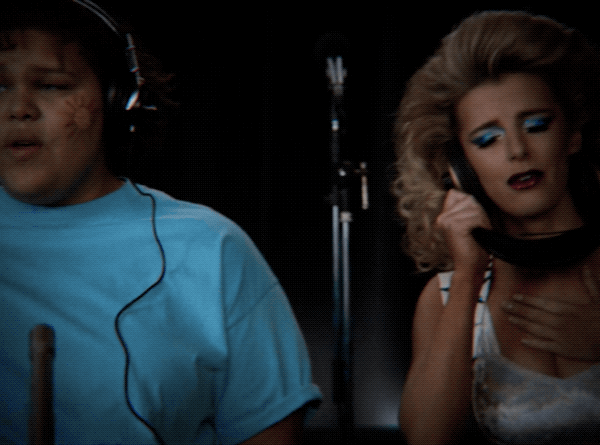
Watch season 3, starting next Friday. Don’t forget.

